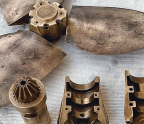
Sprawled, glass in hand, in the cockpit of my friend James Stock’s beautiful Stephen Jones-designed Mystery 35, I pondered on the eclectic fleet of elegant flag-bedecked classics that surrounded us in Paimpol Harbour on the North Brittany coast.
These ranged from elderly wooden yachts to early GRP classics such as Swans, Nicholson 43s, 36s and 32s, Twisters, Contessas, Nordic Folkboats et al. Originally known as the Classic Regatta Anglo-Breton (CRAB to its friends), I was lucky enough to be participating in the renamed Classic Channel Regatta 2022 race round the Île de Bréhat.
I’d crewed on James’s previous classic – a Twister 28 – in the 2013 and 2015 editions of the race. But purists might ask what any GRP yacht was doing in a fleet of classics. Surely they should all be wood? Why were several ‘plastic fantastics’, albeit beautiful, seaworthy and speedy examples, gatecrashing such a gathering? Our Mystery 35, although a recent design, was deemed to be a ‘modern classic’ – along with the Spirit range – by the organisers of the event.
Organisers discretion
Times are changing. While the British Classic Yacht Club (BCYC) restricts membership to owners of wood or steel yachts above 30ft and designed before 1970, Classic Channel Regatta chairman Bruce Thorogood told me that its doors were open to two groups of classics of wood, steel, aluminium or GRP. These comprise designs from before the end of 1968, and later yachts designed before the end of 1974.
He said: “Boats built as one-offs or in limited series are considered classic unless there’s a reason to exclude them. For GRP production boats, the design needs to be approved by the organisers. Many GRP yachts were still traditional looking, being derivatives of designs that could have been built in wood.”
Bruce added: “To my mind it’s absurd to reject all GRP boats when it has been the major boatbuilding material for over half a century and many very fine designs have been built in GRP. I think hull material is irrelevant; it is all about style and quality.”
When it comes to size, the Classic Channel Regatta organisers accept a minimum length of 7.5m for cross-Channel events and 5.4m for inshore regattas – so boats like Vertues, Folkboats, Stellas, Twisters and Contessa 26s can join the fun.
Like many old age pensioners, I started sailing and racing in wooden yachts. These were the norm in the post war years up to the late 1960s; and would now all be termed as classics. First up came a beautiful Robert Clark designed 60-footer called Lara; my grandfather’s pride and joy. Then I graduated to prancing precariously on the narrow and unfenced foredeck of a Solent Sunbeam, closely followed by an International One Design (IOD). A bit later, I turned to cruiser-racing on a South Coast One Design (SCOD) then my father’s Sandy Balfour-designed and Berthon-built 36-footer Matchless.
‘The Folkboat was an influential design that spawned countless GRP long-keelers’






